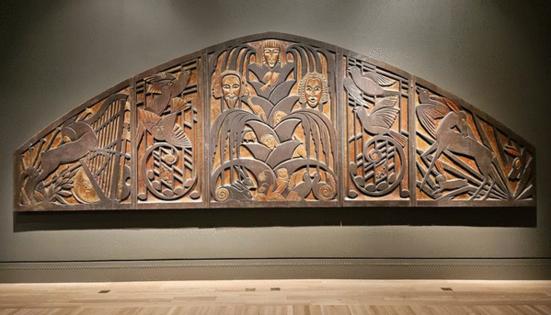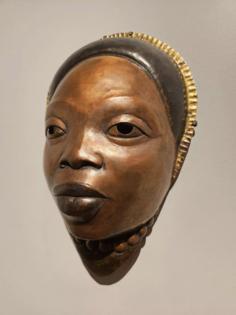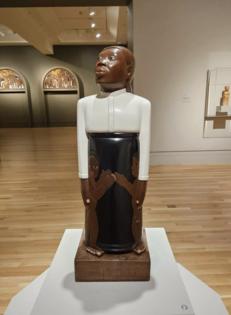Sculptor Sargent Claude Johnson's core commitment to self-love was a foundation for collective Black pride
Published in Lifestyles
LOS ANGELES — An unusual pose marks figures in three of the 40-plus works by Sargent Claude Johnson in a modest but illuminating survey exhibition of the Bay Area artist, the first since 1998, newly opened at the Huntington Library, Art Museum and Botanical Gardens. The pose speaks volumes.
Two are slightly different versions of a terracotta bust of an unidentified young man, titled only "Chester," and the third is a chalk drawing of a mother and child. The drawing, one of six works on paper on display, shows a seated woman embracing a child kneeling in front of her, arms wrapped around her ample waist in an enveloping hug.
Whether young man or mom, the gesture puts the palm of his or her right hand up against the head, cupping the cheek. This isn't a smack-my-head display of shock, horror or dismay — not a one-handed riff on "The Scream." Unlike Edvard Munch's epic, open-mouthed, two-handed wail, the faces in Johnson's art are tranquil and composed, not emotional. His people are poised.
So what is that rather curious pose of hand-to-face about? For one thing, it registers a degree of introspective thoughtfulness — a sort of visual equivalent of "hmm."
The protective mother and "Chester" are both engaged in reflection. An autobiographical edge is likely, given that Johnson, born in Boston in 1888, was orphaned at 15. Sargent's father, a white man of Swedish descent, died when the boy was not yet 10. His Black and Indigenous mother succumbed from tuberculosis just a few years later.
Yet I think the gesture is more than introspection — more than an artist at midlife asserting an essential quality of contemplation on his past. Think of the last time you cupped a cheek with the palm of your hand. No doubt it was a gentle, tender gesture of affection — of intimate warmth and care, offered to another. Usually, the gesture is directed outward at a beloved, perhaps even as a prelude to a kiss.
In these works, though, Johnson shifts the recipient. He turns the gesture inward. The boy and the mom are beloved, but it's their own face that each is shown to caress. Johnson crafted a subtle gesture of self-love — not pompous or vain, but simple and resolute.
That's what makes these works so compelling. It's also what makes the work somewhat distinctive in the Harlem Renaissance of the 1920s and '30s, which began with literary and musical expression — Zora Neale Hurston, Langston Hughes, Ma Rainey, Cab Calloway and scores more — but soon expanded to include visual art. Beginning in the years after World War I, the Harlem Renaissance saw a cultural explosion in which diverse narratives of Black life proliferated.
The curious gesture seems to crystallize a core philosophical element in the genesis of Black cultural pride, for which Johnson was a shining artistic light. Self-love comes first. All three works date from 1930-32, early in the Great Depression, and a period that marks the maturing of the artist's career.
The two towering philosophers of the Black Renaissance movement, W.E.B. Du Bois and Alain Locke, had conflicting ideas on the subject of art's role. Du Bois, older and artistically more conservative, advocated vigorous protest to achieve equality, but believed artists needed to represent an uncompromising image of social uplift. Locke, a contemporary of Johnson and champion of his work, as well as editor of the influential 1925 anthology "The New Negro: An Interpretation," criticized that view as favoring propaganda over art.
...continued
©2024 Los Angeles Times. Visit at latimes.com. Distributed by Tribune Content Agency, LLC.












Comments